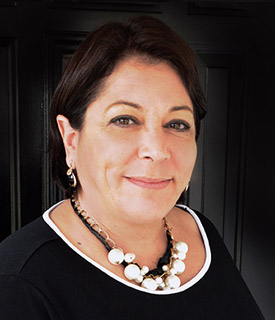When people use the word obsessive or the acronym OCD in a casual, informal manner, they’re most often talking about personal preferences or things they like, because there’s nothing casual about the real symptoms of obsessive-compulsive disorder. When the symptoms of obsessive-compulsive disorder reach the threshold for clinical diagnosis, they can disrupt almost all areas of life.
People with mild and moderate OCD experience symptoms that are uncomfortable and impair daily function. The associated emotions are difficult but manageable.. People with severe OCD experience symptoms that are very uncomfortable and distressing that not only impair, but often completely prevent full participation in daily activity. Symptoms of severe OCD can have a negative effect on family life, work performance, academic achievement, and peer/interpersonal relationships.
With that said, it’s important for people with OCD, or people with loved ones with OCD, to understand this important fact:
Evidence-based treatment for OCD can work, and help patients regain balance and control over their lives
In this article, we’ll describe the core symptoms of OCD, which can help individuals and families make informed decisions about their mental health and seeking effective, evidence-based mental health treatment.
Obsessions and Compulsions: Core Symptoms of Obsessive-Compulsive Disorder
Experts indicate symptoms of OCD appear in two categories, or types, which we mention in the definition of OCD in the beginning of this article: obsessions and compulsions. We’ll define those now.
Obsessions
The International OCD Foundation (IOCDF) offers this definition of OCD-related obsessions:
“…thoughts, images, or impulses that occur over and over again and feel outside of the person’s control.”
In most cases, these thoughts are unwelcome, cause emotional and psychological distress, and people with OCD know they’re not rational or logical. Unwanted, obsessive thoughts can trigger emotions like fear, doubt, and self-loathing.
It’s important to reiterate that really liking something – a.k.a. being obsessed with a sport, a movie, a specific food, the way we use the term in casual speech – is not the same as having the type of obsessive thoughts associated with OCD. In clinical OCD, obsessions are unwanted, disruptive, and can cause emotional or psychological pain, whereas being obsessed with a song, for instance, is voluntary, associated with pleasure, and does not impair the ability to engage in the basic activities of daily life.
Now we’ll look at the specific types of obsessions common among people with OCD.
Contamination
People with contamination obsessions may fear:
- Dirt/anything they think isn’t clean
- Body fluids
- Germs/microbes
Violence
People with obsessions related to violence may fear:
- Harming themselves
- Harming others
- Negative emotions associated with unwanted violent thoughts or violent mental images
Responsibility
People with obsessions related to responsibility may fear:
- Causing accidents by their own mistakes
- Causing harm to others by being neglectful, making a mistake, or forgetting to do/not do something
Perfectionism
People with obsessions related to perfectionism spend a disproportionate amount of time fearing/worrying about:
- How personal and household items are organized/appear
- Whether they’ll forget important information
- Whether they’ll lose/misplace important objects
- Doing everything in their lives flawlessly
- Making mistakes of any kind.
Common obsessions for people with OCD also may include thoughts associated with religion, relationships, sex/sexuality, gender/gender identity, morality, and death.
Next, we’ll discuss compulsions.
Compulsions
The IOCDF offers this definition of OCD-related compulsions:
“…repetitive behaviors or thoughts that a person uses with the intention of neutralizing, counteracting, or making their obsessions go away.”
In almost all cases, individuals diagnosed with OCD know engaging in compulsive behavior only offers short-term relief from the disruptive emotions associated with their obsessions. But without effective tools to process their emotions and manage their thoughts, they may behave compulsively. Engaging in compulsive behavior can take valuable time, and in severe cases, completely prevent participating in typical daily behavior.
Let’s review the types of obsessions common among people with OCD.
Washing/Cleaning
People with washing/cleaning compulsions often:
- Wash their hands in a specific way every time
- Spend excessive time on personal cleanliness/grooming
- Spend excessive time cleaning their home and everything in it
- Create complex routines to keep things clean/avoid getting them dirty
Checking
People with checking compulsions often:
- Send time ensuring they cause no harm to anyone
- Spend time ensuring others don’t harm themselves
- Make excessive calls/send texts to make sure loved ones are okay
- Take time reviewing anything they do to check for mistakes
Repeating
People with repeating compulsions may:
- Do the same, common activity over and over again, such as opening and closing doors, windows, or cabinets, turning lights on or off, or leaving/entering a room or their home.
- Engage in repetitive movements, including scratching themselves, tapping themselves, blinking, or touching objects in a specific way
- Prefer doing any behavior in numbered sets, like turning off the bedroom light four times before going to sleep
Compulsive behavior can also involve other internal or external behaviors such as:
- Playing past events over and over in their minds
- Fixing objects so they’re just right
- Counting behaviors or objects so they end on a satisfying number
- Balancing things, also called cancelling or undoing things, such as saying/thinking something positive after saying/thinking something negative, in hopes that the positive thought or statement will replace or erase the negative one
It’s not difficult to understand how these symptoms can be disruptive, scary, and create problems across all life domains. But it’s important to reiterate what we say above: treatment for OCD can work. With professional treatment and support, patients with OCD can manage the emotions associated with their obsessions, reduce time spent on engaging in compulsive behaviors, and regain the harmony and balance upset by their symptoms.
To learn more about treatment for OCD, please navigate to our blog and read this article:
What Kind of Treatment Works for Obsessive-Compulsive Disorder (OCD)?
Finding Support: Resources
If you or someone you know needs professional treatment and support for a mental health disorder such as obsessive-compulsive disorder, please contact us here at Crownview Psychiatric Institute: we can help. In addition, you can find excellent information on OCD from The International OCD Foundation (IOCDF), and locate professional support through the following online resources:
- The National Alliance on Mental lllness (NAMI): NAMI Home Page
- The National institute of Mental Health (NIMH): NIMH Treatment Help Page
- American Psychiatric Association (APA): Treatment Locator
- Substance Abuse and Mental Health Services Administration (SAMHSA): Early Serious Mental Illness Treatment Locator


 Gianna Melendez
Gianna Melendez Jodie Dahl, CpHT
Jodie Dahl, CpHT